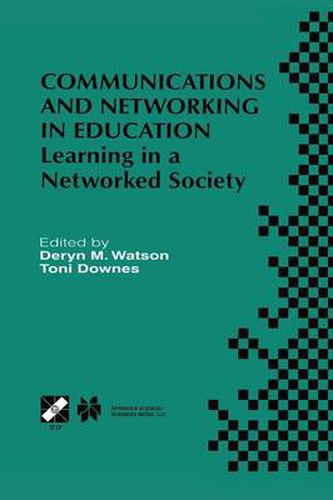Readings Newsletter
Become a Readings Member to make your shopping experience even easier.
Sign in or sign up for free!
You’re not far away from qualifying for FREE standard shipping within Australia
You’ve qualified for FREE standard shipping within Australia
The cart is loading…






This title is printed to order. This book may have been self-published. If so, we cannot guarantee the quality of the content. In the main most books will have gone through the editing process however some may not. We therefore suggest that you be aware of this before ordering this book. If in doubt check either the author or publisher’s details as we are unable to accept any returns unless they are faulty. Please contact us if you have any questions.
In most schools the dominant supporting technology has been either the stand-alone personal computer or a modest local network. The situation is changing rapidly as a rising number of schools provide access to the Internet for their staff and pupils, opening avenues for communication and networking hitherto not possible.
This book reflects on this change. It aims to further the vision of how these new technologies could improve and transform aspects of education. Yet in parallel it asks serious questions about the realities of an interface between the social, cultural and pedagogical contexts of education and the actual affordances that these new information and communication technologies offer.
The chapters in this book provide a heady mix of foresight and practical reporting, of planning for the future but at the same time respecting the problems education already has with current technologies. The richness of the points presented here stems in part from the range of experience of the international authors - from academics and administrators, to teachers and curriculum designers. This mix ensures that the central questions on communications and networking in education are considered not simply from a variety of personal perspectives, but also from different cultural and environmental experiences. And yet interest also lies in the commonality of reporting and discussion based on activity in the field. All the contributions draw heavily on research and experience in devising and running projects and experimental activities in a range of schools and teacher-training institutions and environments. The opinions expressed are thus grounded in knowledge gained from work embedded in the reality of today’s educational settings. This must be the only sound base upon which to consider the issues of the future.
This book is essential reading for all professionals involved in all aspects of information and communication technologies in education. Teachers, lecturers, researchers, students and administrators will find it invaluable.
$9.00 standard shipping within Australia
FREE standard shipping within Australia for orders over $100.00
Express & International shipping calculated at checkout
This title is printed to order. This book may have been self-published. If so, we cannot guarantee the quality of the content. In the main most books will have gone through the editing process however some may not. We therefore suggest that you be aware of this before ordering this book. If in doubt check either the author or publisher’s details as we are unable to accept any returns unless they are faulty. Please contact us if you have any questions.
In most schools the dominant supporting technology has been either the stand-alone personal computer or a modest local network. The situation is changing rapidly as a rising number of schools provide access to the Internet for their staff and pupils, opening avenues for communication and networking hitherto not possible.
This book reflects on this change. It aims to further the vision of how these new technologies could improve and transform aspects of education. Yet in parallel it asks serious questions about the realities of an interface between the social, cultural and pedagogical contexts of education and the actual affordances that these new information and communication technologies offer.
The chapters in this book provide a heady mix of foresight and practical reporting, of planning for the future but at the same time respecting the problems education already has with current technologies. The richness of the points presented here stems in part from the range of experience of the international authors - from academics and administrators, to teachers and curriculum designers. This mix ensures that the central questions on communications and networking in education are considered not simply from a variety of personal perspectives, but also from different cultural and environmental experiences. And yet interest also lies in the commonality of reporting and discussion based on activity in the field. All the contributions draw heavily on research and experience in devising and running projects and experimental activities in a range of schools and teacher-training institutions and environments. The opinions expressed are thus grounded in knowledge gained from work embedded in the reality of today’s educational settings. This must be the only sound base upon which to consider the issues of the future.
This book is essential reading for all professionals involved in all aspects of information and communication technologies in education. Teachers, lecturers, researchers, students and administrators will find it invaluable.